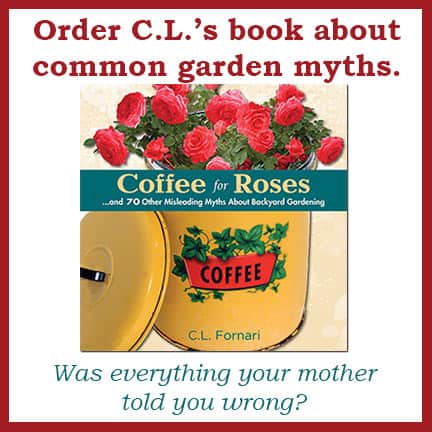Several people have expressed interest in our solar heated seed-starting shed so here is a short pictorial explanation of how it is made and why it works.
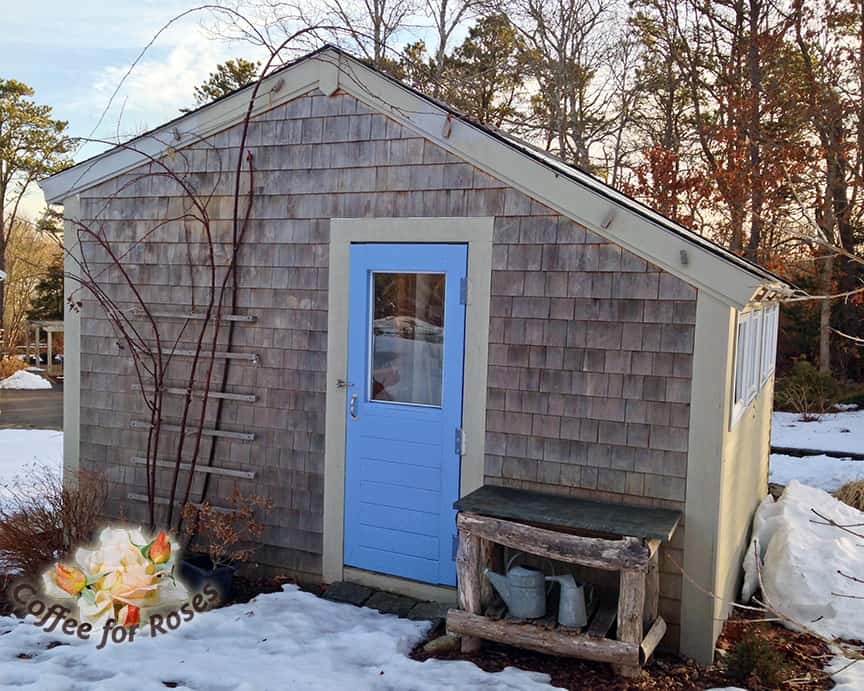
This is the west side of the shed my husband built. The left side in this photo is uninsulated and has the normal shed junk in it. (Photo below) The side on the right, which faces south, is insulated and this is where we start seeds and grow greens in the winter.

This is the side that faces south. The polycarbonate panels on the roof let in light, as do the windows in the winter.
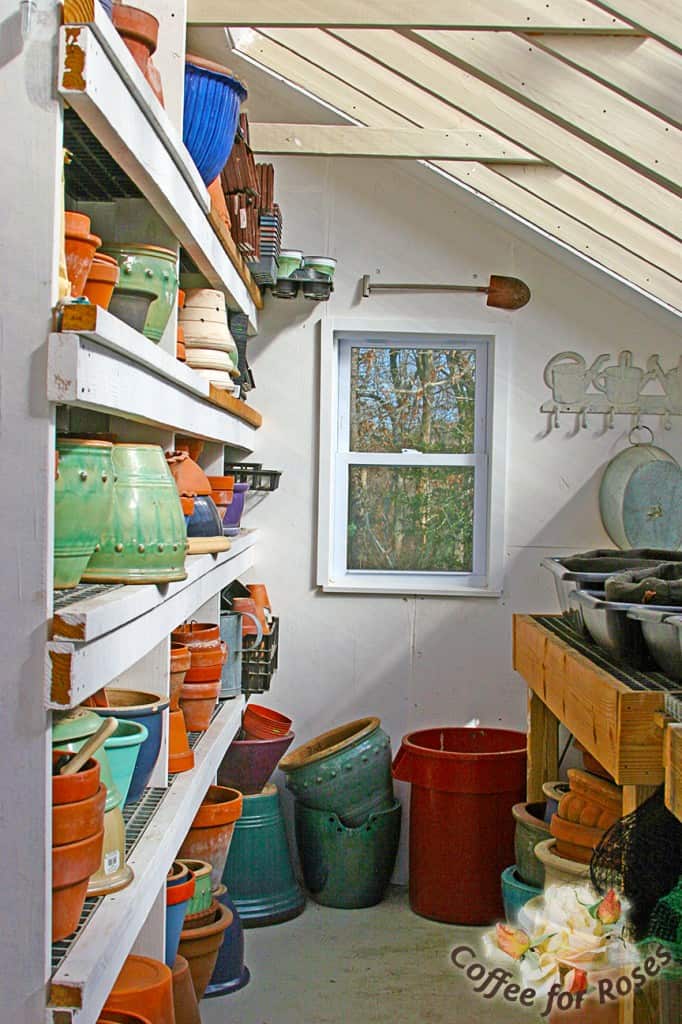
On the seed-starting side I had my husband build shelves that hold most of my pots. It makes good use of this tall wall and the clay pots absorb the heat of the sun all day and release it at night.
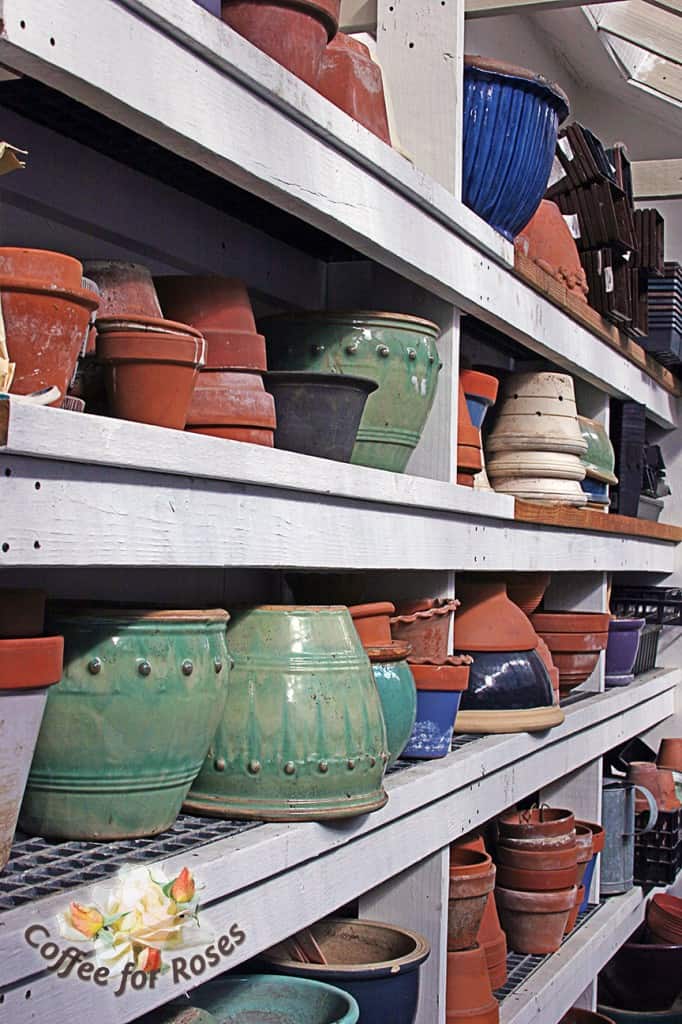
We have data loggers in the shed that record the inside temperatures over several months. When we download the data we’ve seen that beginning in the second week of February the temperature in this part of the shed doesn’t go below freezing even at night. Starting in March, in fact, it stays quite warm in here. There is no electricity in the shed. We do not have bottles of water or any other “heat sink” devises other than the pots, and we don’t put bubble wrap or other extra insulation on the roof or windows. Although the temperatures where we live do go down into single digits, and there are days when they never rise above 32 degrees F, it seldom goes below zero.

Right now there are bins on the bench by the windows, each containing a Smart Pot. In the summer these fabric pots are filled with soil and placed along the edge of our zinnia patch. We grow our potatoes in Smart Pots and have very successfully grown eggplant, leeks, and salad greens in them as well. In the winter we take some of the soil out so they’re not so heavy and bring the Smart Pots into the shed. The soil is refreshed with compost and we plant lettuce seeds here in December.
You can see and purchase Smart Pots here.
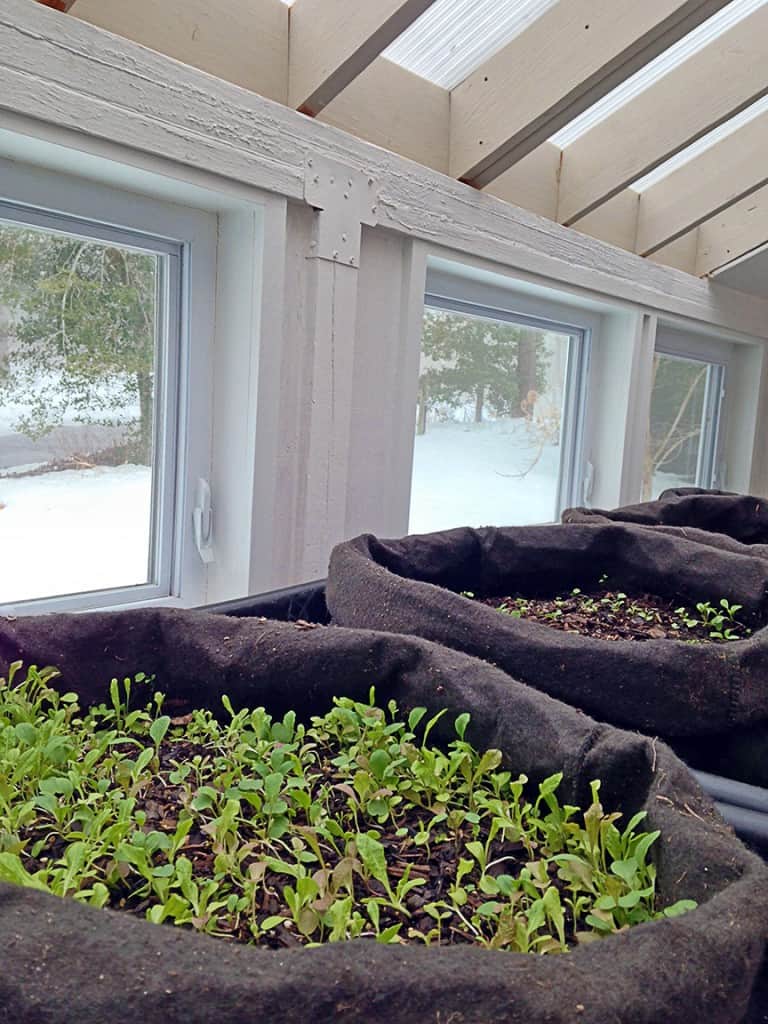
In a mild winter we can be harvesting salad greens in early February. This has been an extremely cold winter so the greens are just getting going. We’ll be picking our first fresh salad the first week in March this year. Although the night time temperatures goes down below 32 in January, the lettuce seedlings survive.
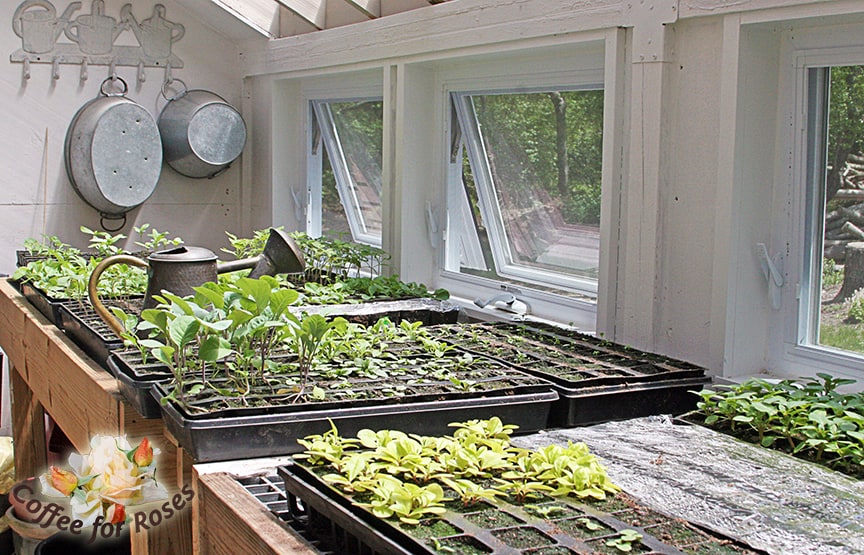
In mid-March I can start the first seeds in this shed. I plant perennials and cool-weather veggies such as broccoli first, followed in April by the annuals. By mid-May this bench is crowed with young plants, and frequently there are also pots of tomatoes and dahlias on the floor. If I’m starting peppers I germinate them indoors since they don’t like the cool April nights in the shed.
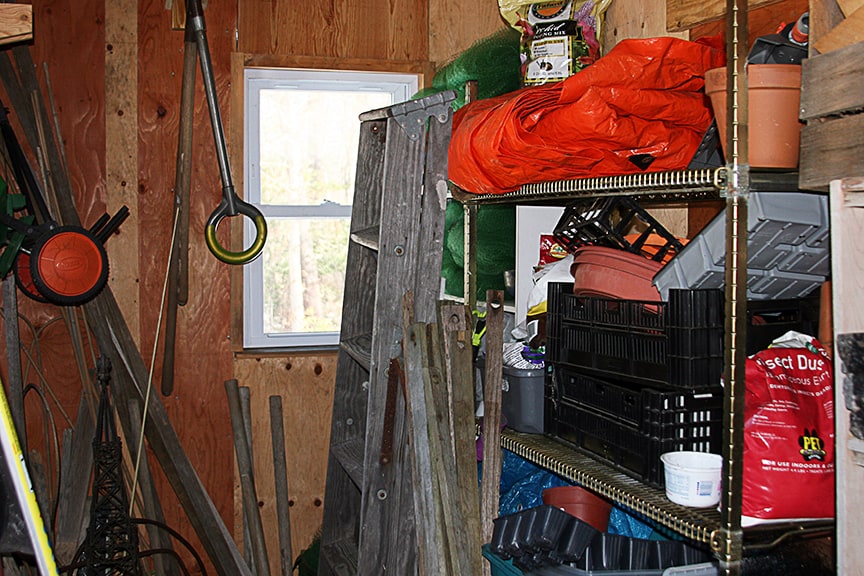
Here is the “cold side” of the shed. Having this space on the north side not only gives us a place to store tools, tarps and bird netting, but also provides a dead air space on the cold side of the building. This helps keep the growing side warm. Note: the red bag is Diatomaceous Earth. I use this organic insect control to dust the tiny seedlings in the veggie garden when they first appear and this one dusting is enough to protect those emerging plants from earwigs and slugs.



